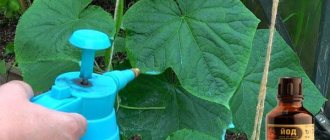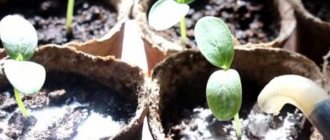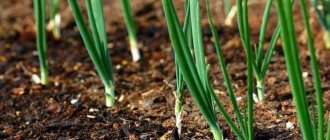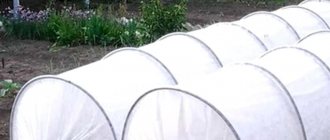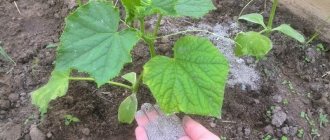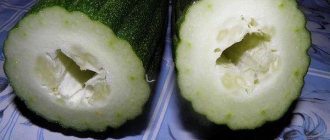Ash solution is an almost ideal food for cucumbers if you know how to prepare it.
Dear readers! For you, we have created communities on social networks in which useful articles and interesting ideas are published several times a day! Subscribe and receive useful content in a convenient format!
Cucumber is one of the most beloved and popular crops grown by gardeners in their garden plots. Fresh and crisp greens straight from the garden are indispensable in the summer in the form of slices and fresh salads. Salted and pickled cucumbers occupy a worthy place on holiday tables all year round.
But in order to get a rich harvest from a cucumber bed, you need to properly feed the crop throughout the season.
We will tell you how to prepare an ash solution in today’s article.
How does ash affect cucumbers?
Ash fertilizer is used in seasonal fertilizing when growing many vegetable and fruit crops.
The composition depends on the type of material being burned. Calcium, potassium and phosphorus, the main components of ash, are in a bioavailable form for cucumbers. In addition to them, they contain iron, manganese, fluorine, zinc, and selenium.
High-quality fertilizing is obtained by burning deciduous and coniferous wood, fallen leaves, grass, peat and manure.
K and Ca compounds are involved in the regulation of water metabolism, retaining water in cucumber tissues. With a lack of these chemical elements, the fruits develop poorly, acquire a bitter taste and quickly deteriorate.
The application of ash fertilizer improves the properties of the soil, reducing its acidity, which has a beneficial effect on the growth of cucumbers.
IMPORTANT! It is not recommended to use residues from the combustion of plastic waste, rubber and other man-made components for application to the soil.
Analysis of purchased ash fertilizers
In modern garden centers you can purchase ready-to-use ash, packaged in bags of various weights.
| Trademark | Composition and description | Packing |
| "Vitaflor" | Available in two versions - birch and mixed deciduous tree ash. A pure product, without impurities or additives, obtained by open combustion. | 5 kg (bags) 1 l (buckets) |
| "Healthy Garden" | Wood ash obtained from burning deciduous trees. Well sifted and dry, does not cake. Can be used to feed cucumber seedlings. | 1 kg |
| "Ivankovskoe" | Deciduous tree ash, rich in phosphorus and potassium. Clean, without impurities, well sifted. | 1 kg |
| "Zolproduct" | Straw ash with 30% potassium content. Obtained by burning dry grass, leaves and straw. Excellent soil deoxidation. | 2 l |
| "Grow up" | Available in bags and plastic buckets. Obtained by burning deciduous trees, contains up to 60% calcium. Can be used instead of lime and dolomite flour. | 3 kg (bags) 1 l (buckets) |
Purchased ash is an inexpensive product and very convenient for growing seedlings at home. Under industrial conditions, it burns out completely, so it does not contain coals, which makes its structure thin. Thanks to this, such ash is excellent for preparing solutions for foliar feeding of cucumbers.
How can you feed cucumbers with ash?
The application of ash fertilizers when feeding cucumbers can be done in different ways:
- Adding dry ash.
- Spraying with solution.
- Watering with solution.
It is good to apply dry fertilizer to the soil being dug up in the fall. You can sprinkle it on the soil under the bush, but then you should thoroughly water the bed.
Ashes scattered on the soil protect cucumbers from slugs, which helps preserve the crop during the wet summer.
Foliar feeding of cucumbers with ash solution
Foliar feeding of cucumbers is done by spraying the plants with a pre-prepared ash decoction. To prepare it, you will need:
- 10 l. water (one bucket).
- 400 – 500 g of ash (2 – 3 cups).
- 50 g soap (it is better to use laundry soap).
You can prepare the fertilizer as follows.
Clean the ashes from large components and brew with boiling water at a ratio of 1:4. Leave to steep until cool. Pour the resulting solution into a bucket of water and add grated soap. To stir thoroughly. Use the solution filtered through a sieve to spray the bushes.
It is recommended to add laundry soap, as it facilitates the adhesion of mixture particles to the shoots and serves as additional protection against pests. It is important to remember that the spray solution must be carefully filtered. This will prevent damage to the sprayer.
Root feeding of cucumbers with ash solution
Root feeding is carried out by watering cucumber bushes with an ash solution. You can prepare it from the following components:
- 300 - 400 g of ash powder (2 -3 cups).
- 10 l. water (1 bucket).
The product is poured into water, mixed, and tightly closed with a lid. The resulting mixture is left to infuse for a week. This solution can be used to water very young sprouts. An adult bush consumes approximately 0.5 liters.
Folk remedies
Increasing the yield is also possible with the use of folk recipes for fertilizing. In addition, the use of folk remedies significantly saves the budget and allows a person to eat organic fruits.
Fertilizers for feeding cucumber bushes, which gardeners prepare with their own hands, have an important advantage: everyone individually selects their components to suit their taste. There are a large number of folk methods to nourish cucumber plants without adding chemicals.
Feeding cucumbers with yeast
To ensure that the quantity and quality of fruits always pleases, experienced gardeners have their own secrets. In particular, regular baker's yeast will help you get delicious, strong cucumbers.
Yeasts are single-celled organisms that belong to the fungi family. Once on the surface of the earth, they provoke greater activity of bacteria living in the soil, which break down organic matter into simpler substances that are easily digestible by plants. Provided that the soil is saturated with organic components or has been saturated with them in advance. Bacteria mineralize humus, releasing phosphorus and nitrogen from it.
In addition, yeast is a natural stimulant for the formation of the root system of cucumber plants, which is extremely necessary at the initial stage of their growth. It has been experimentally proven that plants fed with yeast grow 8 times faster than unfed crops. The root system is formed two weeks earlier. Accordingly, as a result of enhanced root development, cucumber shoots become stronger. The plants bloom profusely, the number of ovaries is growing. The fruits are formed smooth, attractive, crispy, and tasty.
Yeast solutions will not replace all mineral fertilizers, but will make it possible to postpone the application of mineral fertilizers for some time, which in turn will save vegetable growers money and time.
Yeast fertilizers are successfully used in open and closed spaces. Plants growing in greenhouses respond better and faster to fertilizing. Yeast can and should be added during the period of growing seedlings. Yeast is added 3-4 times during the season.
Yeast feeding scheme: the first time 7-7 days after planting the seedlings, the second time after feeding with superphosphate, the third time 30 days after the second feeding.
Yeast for cucumber bushes is added in solutions. No other ingredients are needed, only fresh or dry yeast and water.
There are three recipes for preparing top dressing with yeast.
- 1 liter of warm water is combined with 100 grams of fresh yeast and mixed. Add another 9 liters of water. The resulting solution is used to irrigate plants at the rate of 1 liter per bush. You can add 50 g of sugar to the solution and leave it to ferment for 2 days in a warm place.
- 1 liter of warm milk is combined with 100 grams of fresh yeast. Milk can be replaced with whey or kefir. Add 9 liters of water to the solution and irrigate the cucumbers.
- Dissolve 2 tablespoons of granulated sugar and 10 grams of dry yeast in a bucket of warm water. One liter of solution is poured into 5 liters of water and the plants are treated.
Yeast solutions do not need to be stored for a long time; it is better to use them immediately after preparation.
In order to achieve high results, you need to take into account some facts. All organic additives, such as bird droppings, manure, compost, inhibit the activity of yeast fungi. Accordingly, they do not need to be entered at the same time. After adding organic fertilizer to the beds, some time must pass before adding yeast.
It is good to add wood ash along with yeast fertilizers. It contains mineral elements such as potassium and calcium, which mushrooms absorb in significant quantities during their development.
Yeast mixtures are applied under cucumber bushes in favorable warm weather and air temperature not lower than +15 C.
Fertilizing with onion peels
Fertilizer for cucumber plants is prepared from dry onion peels. It contains many elements necessary for fruits. In addition, an infusion or decoction of the husk is a good means of preventing diseases.
The recipe for preparing the infusion is simple: 20 grams of onion peels are added to 5 liters of warm water. The mixture is left to ferment for 5 days, then filtered. The resulting product is sprayed on cucumbers at the rate of 2 liters of infusion per 1 bush.
To prepare the decoction, pour a handful of onion peels into 1.5 liters of water and cook for 7-10 minutes. The broth is cooled, filtered, diluted with 3.5 liters of water. The resulting product is used to irrigate cucumbers at the rate of half a liter of decoction per bush.
Fertilizer with eggshells
Plantings with acidic soil are fertilized with eggshells, which also loosens the soil. To feed, the shells are dried, crushed and useful infusions are made. Infusion recipe: crushed shells of 5 eggs are poured with 1 liter of hot water and infused for 5 days. The finished infusion is mixed, diluted with water (1:5) and used for its intended purpose.
The feeding from the shell will be supplemented by an extract from the remains of carrots, banana peels, and potato peelings. The remains are poured with boiling water, left for 7 days, then filtered. A glass of infusion from plant residues is combined with 5 liters of water and an infusion of eggshells (1:1).
Feeding cucumbers with soda
Soda is the most harmless and inexpensive drug. Weak alkali, bicarbonate or sodium bicarbonate are all synonyms for regular baking soda. It is used to destroy harmful insects and combat fungal plant diseases. Sodium bicarbonate successfully replaces chemicals. In addition, soda favors the ability of seeds to germinate and increases the fruiting phase.
Soda increases the pH value, which, in turn, helps destroy harmful microorganisms, for example, fungal spores that fall on the seeds from the outside.
If external conditions are favorable, then the spores multiply intensively and destroy the fruits. To reduce the likelihood of developing fungal diseases, gardeners soak the seeds for 24 hours in a soda solution (1 teaspoon per 1 liter of water) before planting. After soaking, the seeds are washed with clean water and dried.
To combat powdery mildew, prepare the following mixture: acetylsalicylic acid (1 crushed aspirin tablet), 1 tablespoon of soda, 1 tablespoon of any vegetable oil, 1 tablespoon of crushed laundry soap. All components are mixed with five liters of water. The resulting mixture is used to irrigate cucumber bushes every 7 days until the powdery mildew disappears.
Sodium bicarbonate is used in areas to control pest invasion. It is used as a prophylactic before the formation of the first ovaries, so that pests cannot settle on the plant. If the period of formation of ovaries has passed, then the fight will continue with more radical compounds - copper sulfate or urea.
In the fight against emerging aphids, soda will also come in handy. A useful solution is prepared as follows: a bucket of water, 2 tablespoons of soda, 2 tablespoons of crushed wood ash, a glass of crushed ordinary laundry soap.
Cucumber bushes are sprayed with the resulting solution in the evenings. It is better to treat the underside of the foliage, as pests usually hide there. Irrigation is carried out every three days until the leaves and shoots are free of invaders.
Treating cucumbers with sodium bicarbonate solution helps stop the early biological process of gradual degradation of leaves and shoots.
Accordingly, the soda solution increases the duration of the fruit formation phase by maintaining the required degree of acidity in the soil, at which vigorous absorption of nutrients occurs. Despite fluctuations in air temperatures and weather, the number of fruits will exceed expectations.
The homeland of cucumbers is the tropics, where there is more moisture in the air than in the ground. For this reason, it is better to water cucumbers at the root often, but not too much. Foliar irrigation should be carried out actively, but not in direct sunlight, in order to avoid burns of the foliage.
You need to use soda when feeding cucumbers wisely, without harming the foliage, since too high a sodium content in the soil inhibits the ripening of the fruit.
The first time the cucumbers are irrigated with soda solution is a couple of weeks after planting in the ground. Second feeding after 14 days. The third time soda is fed in August to continue the formation of fruits.
Gardeners treat cucumber bushes with a soda solution so as not to use chemicals in their garden once again, and at the same time avoid infection of crops by fungi and bacteria.
Feeding cucumbers with ammonia
Ammonia, like iodine, is often found in people's home medicine cabinets. The remedy gained popularity due to its exceptional ability to quickly revive people who have lost consciousness. But there are other methods of using it. It is often used to counteract parasites that attack crops and to feed plants.
Ammonia is an aqueous solution of ammonium hydroxide, 10% concentration of ammonia in water. It is a transparent liquid, colorless, with a pronounced pungent odor. Ammonia became known in 1774, and ammonia - its solution - was used by the Egyptians many centuries ago.
Ammonia molecules contain a nitrogen atom, an element that plants need. In principle, nitrogen is needed in varying amounts by all living beings, cucumbers are no exception.
The fact of nitrogen deficiency in the soil where plants develop is important. The lack of this element causes a disruption in the production of chlorophyll, which, in turn, provokes the development of a disease such as chlorosis and slowly leads to the death of the plant. The leaves of such crops change color, become lifeless, and fall off.
Leaves saturated with nitrogen have a rich, bright malachite color, shoots and foliage grow more actively.
Ammonia contains 41% nitrogen, which means it will be an acceptable addition to cucumbers. Thanks to ammonia, the fruits do not accumulate nitrates, which have an adverse effect on the human body.
In addition to the above, when treating plants with ammonia, soil acidification, which is detrimental to beneficial microorganisms, is reduced.
Ammonia has a positive effect on many vegetable crops.
It is important to understand that ammonia is a substance that can cause undesirable consequences; it is not difficult for them to become poisoned. It is able to penetrate the human body through the skin, mucous membranes or lungs. If it comes into contact with the skin or mucous membranes, ammonia causes a burn. If such a situation occurs, you should immediately thoroughly rinse the injured parts of the body with water.
When preparing ammonia solutions, be sure to follow safety precautions. Basic rules for preventing negative consequences:
- work is carried out wearing rubber gloves, a mask for respiratory protection, and goggles;
- irrigate plants in the direction of the wind;
- in greenhouses, open the frames and raise the canopy;
- Protect electrical wiring from drops of solution.
Ammonia has a not entirely pleasant feature, such as powerful volatility, so the priority is to treat it at the root of the plant. To do this, prepare a solution: 3 tablespoons of alcohol per 10 liters of water. Cucumber bushes are watered with this solution in a thin stream so that the solution flows directly under the root of the crops.
In order to prevent the occurrence of burns on parts of plants, preventive measures are taken: after irrigating the bushes with ammonia, they are sprayed with water. Before spraying, turn on the fog mode on the spray gun.
Spraying cucumbers, that is, foliar treatment, works flawlessly when it is necessary to quickly saturate crops with nitrogen. To prepare the solution, take 50 milliliters of 10% ammonium hydroxide per 10 liters of water. Cucumber lashes are processed when there is no wind, otherwise most of the nutritional properties of the solution will be carried away with the wind, bypassing the plants, and there will be no result from the treatment.
Spraying is best done in the evening, after the sun has set, or in the morning. Cloudy weather is ideal for this procedure.
Before adding nitrogen, you need to be sure that the cucumbers really need it.
Signs of nitrogen deficiency:
- the lower leaves of the bushes acquire a lemon tint;
- many tiny leaves are formed;
- the stems become thinner and break quickly;
- mature shoots stop growing;
- inflorescences are finally formed, but do not bloom;
- plants slowly wither.
Treatment with ammonium hydroxide solution is not carried out until the seedlings have formed the first 4 leaves. Ammonia is used in different concentrations. For each individual case, select your own dose of the solution.
Experienced vegetable growers make a fertilizer suitable for almost all crops and types of fertilizing: mix 50 milliliters of ammonia and 4 liters of water. To prepare a less saturated solution, dilute 1 tablespoon of alcohol in 10 liters of water. A weak concentration of the solution is practically not dangerous to the human body.
If there is a need to spray the crops with a concentrated solution, then mix 1 spoon of ammonia and 1 liter of water. Such a working composition is handled very carefully; one drop of it can cause severe burns to any biological surface.
Ammonium hydroxide solution is used at any time. If there are signs that the plant lacks nitrogen, then this deficiency is immediately replenished.
If there are no signs, then there is a scheme developed over the years for the most effective treatment. The first feeding, according to the scheme, is carried out in the period of time when spring ends. At this moment, the seedlings are just beginning to actively develop and are fed once every seven days with a universal composition.
During the phase of rapid formation of ovaries, plants are watered more intensively than at the beginning of cultivation. Every seven days, at least two waterings are carried out with a concentrated solution of ammonia.
Over time, the cucumber bushes develop healthy bright malachite leaves and shoots, then vegetable growers return to the universal composition and one weekly watering.
If the seedlings grow slowly and a large number of barren flowers are formed, the amount of watering is increased in order to maximally saturate the plants with the beneficial substances they need. During the period of flowering of cucumber plants and the formation of fruits, treatment with ammonium hydroxide solution is stopped.
At each stage of treatment with ammonia solution, it is necessary to control the plant’s response to fertilizing.
A solution of ammonia is actively used by vegetable growers against aphid attacks. The pest affects many crops and multiplies very quickly. The parasite lives on the underside of leaves, sucking out their nutrients with its trunk. The result of aphid aggression is deformation of the leaves, loss of moisture, falling of the ovaries, a decrease in the growth rate of the stems, and the complete death of the entire cucumber bush.
It is difficult to detect pests; they are practically invisible: they crawl right under the leaves. If parasites are detected, urgent procedures are carried out to get rid of them.
A solution to combat aphids is prepared as follows: 10 liters of water, 50 ml of ammonium hydroxide, 250 grams of crushed baby, tar or laundry soap. Soap is added so that the mixture sticks to the surface of the sheet plates and stays on them. Treatment with the resulting solution is carried out every two weeks, but experienced vegetable growers claim that the first and only treatment is sufficient to obtain a positive result.
Feeding cucumbers with iodine
Feeding cucumber vines with iodine, foliar and root, promotes rejuvenation and rapid growth of plants, improves the taste and aroma of the fruit. Iodine repels parasitic insects and increases resistance to disease.
The crop must be treated if there are few ovaries, the leaves wither, and the vines do not grow. For treatment, add 15 drops of iodine to 1 liter of water for irrigation, stir and pour under each plant.
Sometimes milk is added to the solution. Add 30 drops of iodine and 1 liter of milk to a bucket of water. The resulting mixture is infused for 12 hours. Then the cucumber vines are watered or sprayed once every two weeks.
If a crop becomes infected with brown rot, it is also irrigated with a solution of water and iodine (2:1). Affected shoots must be treated from below to a height of at least 15 cm. This treatment is carried out for another 4 days.
Feeding cucumbers with ash
Wood ash has been used for feeding cucumber crops for many years: it is considered the first balanced fertilizer. Ash is a useful organic fertilizer, saturated with various chemical elements: calcium, potassium, phosphorus. The chemical composition of the ash varies; it depends on the type of plants burned, as well as their age (the ashes of young crops contain more nutrients than the ashes of adults).
Since ash contains different amounts of chemicals, it affects plants and soil differently. Ash is also used to reduce the acidity level of the earth.
Ash is valuable primarily because it helps increase yield. After its use, the foliage of the cucumber crop becomes more voluminous, the color is brighter, and the processes of photosynthesis are accelerated. The number of flowers increases, many ovaries are formed, the shoots become stronger, more resistant to infections and parasites. Ash will also help if the cucumber plant has a lack of calcium, which manifests itself in the fragility of the root system, loss of color of young leaves and tips of shoots, downward bending of leaves, falling of flowers and ovaries.
Ash is not only an effective fertilizer, but also a wonderful preventive and therapeutic substance against scab and aphids, which often injure crops, both in garden beds and in greenhouses. The ash powder is sifted through a sieve and sprinkled on top of the cucumbers. If you scatter ash on the ground around the plants, you can avoid slug attacks.
There are many ways to feed with ash and recipes for making fertilizers based on it. The ash is used in greenhouses and open plantings. It is important to remember that powdered ash is not mixed with other organic additives.
Dry ash is used in autumn or spring. It is brought into the ground after digging (100 grams per 1 square meter of land) and watered abundantly with warm water. Ash powder provokes the activity of beneficial microorganisms in the soil and attracts earthworms, which transform organic components in the soil. This makes the land more loose and fertile.
Those who like to cultivate their vegetables add ash powder when planting seeds or young plants directly into the prepared holes. Before planting, a couple of tablespoons of ash are poured into each hole, then mixed with soil.
Ash powder is used in the form of an aqueous solution: one tablespoon is dissolved in two liters of water and left for 48 hours. The resulting solution is filtered, then the seeds are soaked in it for 5 hours. After this procedure, cucumber seeds sprout faster, and the seedlings are more viable and hardy.
Fertilizing can be applied at the seedling stage, in the phase of formation of 2-3 true leaves and throughout the entire growth period.
For the first feeding of the cucumber crop, prepare a solution: 10 tablespoons of ash are dissolved in 10 liters of warm water, left for 7 days. Then the solution is filtered and the cucumber bushes are watered at the root, 1 liter once every seven days.
Ash powder is diluted in the same proportions to feed cucumbers when their first flowers form.
When the plants rapidly bear fruit, a solution is prepared for them: 3 tablespoons of ash are mixed with 3 liters of water and boiled for half an hour. Then the solution is cooled, filtered, and its volume is brought to 10 liters. The entire plant is sprayed with the resulting composition from a spray bottle. This nutritional feeding is carried out many times during the season, every week, until the end of plant growth and development.
Gardeners also prepare ash-herbal tea for fertilizing, since ash powder interacts well with garden grass. Ash-nettle infusion works effectively. Cucumbers immediately respond to simple but effective nutrition: they bloom faster and produce fruits with a richer cucumber smell.
The recipe for the infusion is simple: fill a bucket one-third with chopped nettle leaves and shoots. Add warm water to the bucket without adding it all the way. Add 250 grams of ash powder and mix. Cover the bucket with a lid and leave for 14 days. Every day you need to stir the infusion. After fermentation is complete, the infusion is filtered and diluted with water (1:10). The resulting nutritious tea is watered over the cucumber crop once a week.
Feeding cucumbers with infusion of rye bread
Feeding cucumber bushes with an infusion of black bread is similar to feeding yeast; it prevents the formation of yellow leaves. A dry loaf of rye bread is immersed in a bucket of warm water overnight, and in the morning the bread is crushed, stirred, and filtered. Water is added to the bread infusion at the rate of 1 liter of infusion per bucket of water, and immediately before irrigating the plants, 30 drops of iodine are added. Spend 2 liters per plant.
Fertilizing with droppings
Organic fertilizers have a positive effect on cucumbers. Fertilizer is applied in liquid form. If mullein is used, then one bucket of fresh cow dung is combined with 4 buckets of warm water. The mixture is stirred periodically throughout the day. Then, a bucket of the healthy mixture is diluted with 10 buckets of water. For each cucumber bush you need 2 liters of the resulting solution.
The droppings from other animals need time to ferment. To do this, pour 2 buckets of fresh droppings with a bucket of warm water, mix and place in the sun for fermentation. After the fermentation process is completed, 1 liter of fertilizer is combined with 10 buckets of water. 2 liters of liquid fertilizer is poured under each plant.
How to prepare an ash solution for feeding cucumbers, popular recipes
To feed cucumbers, a water infusion, decoction or ash solution is usually used. The principle of preparing the working mixture is general. Based on it, compositions for different types of fertilizers are prepared.
Infusion
How to prepare ash solution step by step:
- Prepare a convenient, preferably non-metallic container. A 10L bucket or tank is ideal.
- Fill the container 1/3 with ash.
- Pour 3 liters of cold water and mix thoroughly.
- Add water to the top of the bucket and close the lid.
- Leave for 3 – 5 days. It is advisable to stir the mixture daily.
- Use for watering at a dilution of 1:10.
Ash decoction
Preparing ash decoction requires more time. It is a more effective feeding, with a prolonged effect on the root system. You can prepare the decoction in two ways:
- Ash powder in a ratio of 1:3 is poured with boiling water and left for several days.
- Ashes in a ratio of 1:2 are boiled for 30 - 45 minutes over low heat. Cool and dilute with cold water 1:10.
The decoction is used for root feeding and spraying of cucumbers. When spraying, you can add a pre-prepared soap solution to it.
Soaking solution for seeds
The germination and further development of cucumbers is well influenced by treating the seeds with an ash solution. A teaspoon of ash is diluted in a glass of water. The seeds are kept in the resulting mixture for 3-5 hours. Before planting in the soil, the seeds should be dried with paper towels.
Feeding with ash at different stages of development
During growth, the plant needs fertilizing of varying quantity and quality. Cucumbers can be fed with ash solution at all stages of the life cycle. You can prepare solutions by adhering to the following recommendations:
- Seed dressing – 1 tbsp / 2 l. water.
- Feeding at the stage of two true leaves – 5 tbsp/2.5 l.
- Flowering period – 20 tbsp/10 l.
- Beginning of fruiting – 5 glasses/5 l.
- Pest prevention – 2 kg/8 l.
Yeast
For feeding from this substance, both fresh and dry material is used.
In the first case, one hundred grams of fresh yeast are dissolved in a bucket of water and left to ferment for one and a half days. This solution is added to cucumbers at the rate of one and a half liters per root. The procedure is carried out once every ten days.
The recipe for feeding from a dry product is as follows:
- ten grams of yeast and a couple of tablespoons of sugar are diluted in ten liters of water;
- the settling process lasts up to three hours.
It should be remembered that such fertilizing of cucumbers with yeast can be carried out no more than twice during the summer period.
How to prepare an ash solution for feeding cucumber seedlings?
Growing cucumbers through seedlings requires special attention to young specimens. Advantages of using ash solution:
- Organic fertilizer, environmentally friendly for cucumbers, humans and the environment.
- It is highly effective, providing seedlings with essential microelements and protecting against a number of diseases.
- Cost-effective feeding.
- Ash fertilizers multifunctionally help cucumber seedlings.
In the plant:
- A stronger root system develops.
- Increases resistance to temperature changes.
- Metabolic processes are accelerated, which leads to rapid plant growth.
- The taste and transportability of the crop are improved.
- When growing seedlings, a decoction of ash is used to feed them.
You can prepare it in the following way:
- Ash, cleared of large particles, is dissolved in water in a ratio of 1:4.
- Bring to a boil and cook over low heat for about half an hour.
- The solution is cooled and filtered through a sieve or cheesecloth.
- Before adding to the soil, dilute with water in a ratio of 1:10.
Seedlings grown using ash fertilizers are distinguished by their rich green color, bush strength and resistance to diseases.
Feeding cucumbers with ash in a greenhouse
Growing cucumbers in a greenhouse has made the work of gardeners easier. Cucumbers protected from temperature changes give a rich harvest and ripen faster.
However, indoor soil is a favorable place not only for healthy vegetable crops, but also for many types of insects, molds and pathogens of various diseases. Along with modern biochemical preparations, the use of ash in the care of greenhouse plants remains relevant.
To process cucumbers indoors, combustion residues must be carefully sifted to a fine fraction. Prepare a solution from the resulting dust in a ratio of 2 tbsp. ash per 1 liter. hot water. The mixture is infused for 2 days and used for root watering of plants.
It is important to know that in closed ground it is useful to regularly sprinkle the soil between plants with dry fertilizer. Consumption per 1 m2 is approximately 100 g. The beds must be thoroughly watered. You can treat the walls of the greenhouse with a solution, which will serve as protection against fungal diseases.
How to use a solution for cucumbers in open ground?
When grown in open ground, cucumbers are not always in favorable conditions. Rains, night temperature changes, and scorching sun affect the growth and fruiting of the crop.
For a good harvest, it is important to feed the beds with organic and mineral fertilizers on time. Ash fertilizers can be applied from the appearance of a pair of true leaves. Repeat during the active growth phase, during flowering and ovary. Feed 3 to 6 times per season.
In open ground, cucumbers can be watered at the root with an ash solution or decoction. Cucumbers do not respond well to watering with cold water, so the liquid should be warm. It is important to try not to get fertilizer on the leaves to avoid sunburn. After watering, the soil must be loosened well.
You can process the entire bush by choosing a cloudy day. Fine nozzles are used to spray cucumbers. The temperature of the liquid should not differ from the ambient temperature.
Bor
This chemical element is necessary for almost all plants. Agronomists claim that fertilizing cucumbers with boric acid increases the fruit yield by more than one and a half times.
The presence of boron contributes to:
- strengthening shoots;
- increasing the number of ovaries;
- good for cucumber roots;
- improves the taste of fruits.
A packet of boric acid can be purchased at any store that sells fertilizers or at an online pharmacy for literally a few rubles. It is very simple to prepare a fertilizing solution with boron:
- one teaspoon (five grams) dissolves in three liters of hot water;
- While continuing to stir, you should increase the volume of water to six to eight liters (about a bucket);
- Gently spray all the leaves of the plant with the prepared solution.
The procedure is best performed on a cloudy day or early in the morning. In the evening, you can spray the plant after sunset.
Feeding is carried out when the following points are noticed:
- the shoots of the plant are very thin and brittle;
- flowers and ovaries wither and fall off;
- A large number of side shoots are formed.
Treating cucumbers with boron solution helps get rid of the problems that have arisen.
When can you feed cucumbers with ash, diagrams
When using ash solutions, you can follow the universal feeding scheme for cucumbers:
- Soaking seeds in ash infusion.
- Feeding at the stage of two true leaves.
- The beginning of flowering.
- Beginning of fruit set.
- Every 2 weeks after harvesting the first cucumbers.
Indicators for emergency application of fertilizing can be marginal drying of the leaf, indicating a deficiency of potassium, and a change in the color of the plant, indicating a lack of phosphorus.
Flowering phase
The future harvest of cucumbers in the garden depends on how this phase proceeds. At the very beginning of flowering, you should add a mixture of ammonium nitrate (30 g), potassium nitrate (20 g) and forty g of superphosphate, diluted in ten liters of water. Pour one liter of the resulting solution under each bush.
Cucumbers are fed after flowering with ash, yeast, manure, and boron.
When should you not fertilize cucumbers with ash?
Using ash solution in a garden plot is not always beneficial and can cause harm. To avoid crop loss, it is important to know the basic rules:
- Ash is a natural soil deoxidizer. If the soil in the area is alkaline, then applying such fertilizing will make it unsuitable for growing cucumbers.
- Do not apply the solution in rainy weather. Excess moisture can lead to rotting of fruits and proliferation of slugs.
- Spraying the leaves is carried out in extreme cases when root watering is not enough. It is not recommended to abuse it.
- When regularly applying complex fertilizers containing the necessary elements, the addition of this fertilizer can lead to their excess.
- Unregulated use leads to loss of soil fertility.
The fertilizer contains macro- and microelements necessary for the development of a healthy cucumber bush. Reasonable application of this universal substance to the cucumber bed will allow you to collect good, friendly harvests.
However, excessive use of fertilizer can shift the salt composition of the soil and leave the owners without cucumbers.
Growing
This juicy green vegetable has been growing in garden beds for centuries. Cucumber grows quickly and produces abundant vegetative mass. Since its homeland is hot India, cucumber loves light, warmth and moisture.
Unlike its garden companion, the tomato, it is picky about the composition of the soil. It produces a good harvest in soil rich in organic matter. Therefore, it is very important to know when and what to feed the plant.
Common mistakes
Growing cucumbers is a fairly easy process. The grateful plant gives attentive owners a bountiful and tasty harvest. However, it is difficult to completely avoid mistakes, especially for novice gardeners. There is no need to rely on ash fertilizing if the following situations occur:
- The lack of crop rotation leads to the spread of diseases and depletion of the soil in essential substances and elements.
- Thickening of plantings requires the introduction of more fertilizing, but the result will be disproportionate to the efforts.
- A one-time heavy application of fertilizer into the hole does not produce results and can lead to a decrease in yield.
- Sowing cucumbers without taking into account climatic conditions. Weak plants with any application of ash fertilizers will give a poor harvest.
- Insufficient or excessive watering.
Taking these factors into account and using an ash solution as a universal fertilizer, you can get a full-fledged harvest of tasty cucumbers from a small area.
Fruiting period
When the fruits ripen, the plant should be fed with liquid complex fertilizers. Humates and herbal infusions are considered the best.
Hymic acids obtained from peat or brown coal are, in principle, not fertilizers, but natural growth stimulants. Having received the drug, cucumbers produce a better and more abundant harvest.
Equally effective is feeding fruiting cucumbers with herbal infusion. This product is prepared as follows:
- All grass cut on the site is stored;
- all green waste is crushed, the barrel is filled by a third with it, and then filled almost to the top with water;
- After ten days of exposure to the open air, the mixture is ready for use.
Important! Plants cannot be watered with herbal infusion in its pure form. It should be diluted in a ratio of one to ten. Water cucumbers no more than once a week.
Answers to frequently asked questions
Does it make sense to treat cucumber seeds with an ash solution?
Yes, keeping seeds in an infusion speeds up their germination and has a beneficial effect on the further development of the plant.
How to protect plants from night temperature changes?
Cucumbers do not tolerate cold weather well. When cold nights are forecast, it is advisable to cover the bed with covering material. Mulching the root zone can also help.
Is it necessary to break off the leaves of cucumbers?
Large leaf plates prevent the penetration of light; it is better to remove excess ones.
Is it possible to add a lot of ash?
Ash alkalizes the soil. The optimal pH for cucumbers is 5 - 7. Excessive application can provoke the transition of a number of chemical elements into an inaccessible form.
Is it possible to apply ash in parallel with other fertilizers?
It is not recommended to apply organic and mineral fertilizers at the same time. It's better to do this one by one. When applying complex fertilizers, it is better to avoid ash.

